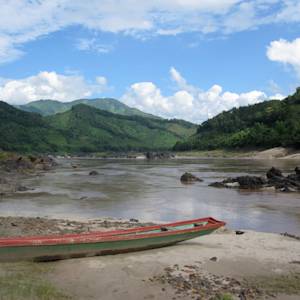Niger River Delta
1950s • Western Africa
"For millions of years . . . the Niger River has ebbed and flowed in accordance with changes in rainfall patterns, all the time depositing sediment at its mouth creating the Niger Delta. This ecoregion comprises the largest swamp forest habitat in Africa after the Congo Basin Swamp Forests. Since the discovery of oil in this region, this former refuge for plants and wildlife is now highly threatened by human activity. Two endemic mammal subspecies that have been affected are the Niger Delta red colobus and the Niger Delta pygmy hippopotamus . . . For many years, the delta escaped the habitat destruction typical of its neighboring ecoregions because it supported lower human population densities and little socioeconomic activity. This was primarily due to the lack of accessibility into the delta. This changed when oil was discovered here in the 1950s and the associated activities (road and canal building) opened up large sections of remote delta habitat for exploitation . . . The only effective habitat protection is found in small sacred groves protected by communities, who also protect animals including crocodiles in a number of lakes and chimpanzees in Nembe. A growing human population, conflicts between different ethnic groups, national political instability, and unsustainable exploitation of natural resources all exist in this ecoregion. The human population of the Niger Delta is growing rapidly, and most of the natural resources (e.g. fish, timber) can no longer meet local needs."
Emma Martin and Neil Burgess, "Niger Delta Swamp Forests," One Earth.
Image: Vincent van Zeijst, CC BY-SA 4.0, via Wikimedia Commons


Learn about Maya Lin’s fifth and final memorial: a multi-platform science based artwork that presents an ecological history of our world - past, present, and future.

Discover ecological histories and stories of former abundance, loss, and recovery on the map of memory.

Learn how we can reduce our emissions and protect and restore species and habitats – around the world.

See how art can help us rethink the problems we face, and give us hope that each one of us can make a difference.

Help make a global memorial something personal and close to home. Share your stories of the natural world.


